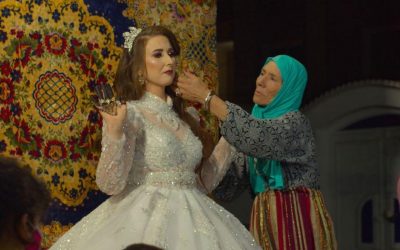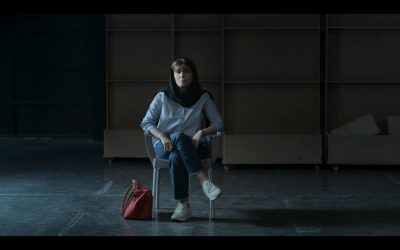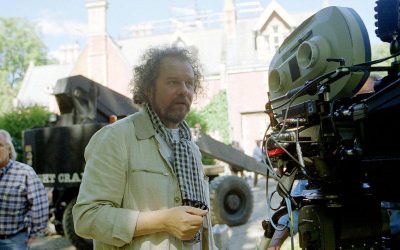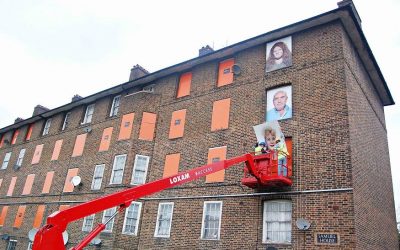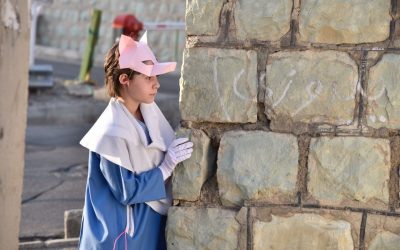Peter Limbrick, professor, Film & Digital Media, Department Chair, Film & Digital Media, Affiliated Faculty: Feminist Studies, History of Art and Visual Culture. Arab and Middle Eastern Cinemas; Postcolonial and transnational cinemas; settler colonialism; queer theory; race, gender, sexuality. Research Interests: Peter Limbrick is Professor of Film and Digital Media. He is the author of Arab Modernism as World Cinema: the Films of Moumen Smihi (University of California Press, 2020) and of Making Settler Cinemas: Film and Colonial Encounters in the United States, Australia, and New Zealand (Palgrave, 2010). He has published articles in Framework, Visual Anthropology, Third Text, Screening the Past, Camera Obscura, and Journal of Visual Culture as well as edited anthologies. Professor Limbrick’s first book, Making Settler Cinemas, studies the material and cultural relations of cinema and settler coloniality in the three sites of his title, all of which are embedded in British imperial history and marked by their own distinctive settler colonial politics. His book reveals the ways in which the modes of film production, distribution, reception, and representation in and between those settler societies construct a transnational politics of settler-indigenous encounter. But his book also reveals the possibilities for resisting and reconfiguring those colonial histories through the ongoing work of film archives, indigenous exhibition and guardianship, and even in the labor of film history itself. Professor Limbrick’s recent work is on Arab film and video and extends his interest in cinema in colonial and postcolonial environments. His book Arab Modernism as World Cinema, on the Moroccan director Moumen Smihi, a central figure in the New Arab Cinema that took hold in the Maghreb (Northern Africa) in the early 1970s, will be published by the University of California Press in spring, 2020 (an essay from this project has been published in a special issue of the journal Third Text.) As part of this project, he has curated a retrospective of Smihi’s work which has shown at the Pacific Film Archive, Berkeley; the Block Cinema, Chicago, and the Tate Modern (UK). With Omnia El-Shakry, he organized the symposium Unfixed Itineraries: Film and Visual Culture from Arab Worlds at UCSC in 2013. He has published two essays on the Palestinian filmmaker Kamal Aljafari, and continues to research on experimental film and video from North Africa, Syria, and Lebanon. A related aspect of his research is the relationship between discourses of colonialism, globalization, and sexuality, especially queer or non-normative constructions of gender and sexuality in transnational cinemas.
RedCut : Your first book, Making Settler Cinemas, studies the material and cultural relations of cinema and settler coloniality in the three sites of your title, all of which are embedded in British imperial history and marked by their own distinctive settler colonial politics. Your book reveals the ways in which the modes of film production, distribution, reception, and representation in and between those settler societies construct a transnational politics of settler-indigenous encounter. But your book also reveals the possibilities for resisting and reconfiguring those colonial histories through the ongoing work of film archives, indigenous exhibition and guardianship, and even in the labor of film history itself. Could you let us know more about your first book? Why did you decide to research and work on these subjects?
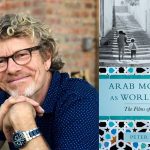
Peter Limbrick
Peter: I grew up in Aotearoa/New Zealand (Aotearoa is the Māori name for the place before colonization). As a Pākehā (white, settler New Zealander) I spent a lot of time thinking about what it was to inhabit a place with a settler colonial history and legacy and most of the literature and art and cinema that I gravitated to tried to reckon in some way with that. So when I watched Hollywood westerns for the first time, I could only see them as settler colonial productions that were manifestations of the same sorts of anxieties and histories of violence that attached to other white and Anglophone settler colonial cultures like Australia or New Zealand. Of course, the settler cultures of all these places differ in some respects, but there are things that tie together that colonial experience of reckoning with Indigenous presence, land, and the imposition of new symbolic systems over existing ones. Later I moved to Australia to study for a PhD. And there, too, I found that kinds of white masculinities that I saw represented in New Zealand and Australian literature and cinema were not completely removed from those that were manifest in some U.S. contexts—while the US vision of itself is always exceptionalist, I saw continuities with other settler colonial environments (and the exceptionalism is in many ways a disavowal of exactly those histories). After I finished my Phd—which looked more generally at questions of white masculinities in relation to colonial spaces—I found myself living in the U.S. and as I worked on this first book, it was the settler colonial question that really seemed paramount to me. I wanted to understand how it was that we could see versions of “the western” in the cinemas of all three of these countries and I wanted to find an explanation that was more than about genre. Working with the archives of American director John Ford, discovered a really fascinating collaboration with Merian C. Cooper that really helped tie together the most iconic U.S. settler colonial westerns to the imperial film histories that Cooper was part of from the 1920s onwards. And then by working with the Ealing Studios archive in England I found more material historical evidence for the way in which Ealing’s Australian westerns (made in the 1940s and 1950s) occupied this unusual position between a British studio’s desire for an imperial film market and a settler colony’s desire for a national cinema: these two things intersected in the films that Ealing made in Australia. And that same period of the 1920s-50s was formative for New Zealand cinema, too, even though the nationalist version of New Zealand cinema wants to see only the more palatable productions after that time as reflective of the country’s identity. Instead I became fascinated by films like Hei Tiki, made by an American in a Māori community in the 1930s and by The Seekers, a 1956 film made by a British studio about the colonization and settlement of the country—it was shot mostly in a studio in Britain but with Māori actors and with some scenes filmed near the town of Whakatāne. These are easy films to critique for their settler colonial politics, but I came to realize that for all their distortions, they have complex afterlives in Māori communities that demand that we take them seriously. The New Zealand Film Archive/Ngā Kaitiaki o Ngā Taonga Whitiāhua (now Ngā Taonga Sound and Vision) have done amazing work bringing films with Māori content, even ones we might think of as colonial or ethnographic or objectionable, back to the communities where they were shot, embedding them in Māori politics and culture with new screenings and opportunities for engagement with the descendants of those who were represented in them. With respect to The Seekers, the more I spoke to Pākehā and Māori who’d been involved with it, the more I uncovered stories that were so much more interesting than the film itself! So I worked with the Ngā Taonga to bring that film back for screenings to local communities and ended up writing about that work, which to me offered much richer possibilities for contesting colonial representations and moving to some kind of shared future.
RedCut: Your book Arab Modernism as World Cinema, on the Moroccan director Moumen Smihi, was published by the University of California Press in 2020 and will soon appear in an Arabic edition published by Kulymat. How did you get from your earlier work on cinema colonial and postcolonial environments to Arab Modernism as World Cinema?
Peter: I think a confluence of a number of factors led me to the book on Smihi. Those last chapters of Making Settler Cinemas—about contemporary Māori and Pākehā engagements with colonial films—make the argument that close reading and critiques of representation are not enough, and that other approaches to cinema history are vital. I started my teaching job at the University of California two years after the US 9/11, and I quickly felt that our students knew nothing about the Arabic-speaking world or the Middle East. I designed a course on Middle Eastern cinema and the more I taught and worked on it in the coming years, the more I felt an excitement for the films I was seeing and the more I saw a need for English-language scholars and teachers to take them seriously and teach and write with them. This was when there were so few Anglophone scholars really publishing informed work on Arab or Middle Eastern cinemas—fortunately, there are many more now. I got involved as a volunteer on the programming team for the Arab Film Festival in San Francisco, which exposed me to even more work, including that of Smihi and Kamal Aljafari, both of whom I’ve written about. My project on Smihi would never have happened without the festival: I came across a screener of his film A Muslim Childhood (2005), we programmed the film, and I invited him to my class at UC Santa Cruz. The following year Kamal Aljafari visited with his film, and I saw so much other work that continues to inspire me. So one thing led to another and I started to feel that writing and teaching about these and other Arab filmmakers was an urgent project, much more so than continuing to work on “representations of” colonial encounters. Then, as now (maybe more so), I think it’s vital that students and publics are seeing the incredible diversity and richness of work from the region in order to counter all the misrepresentations, preconceptions, and ignorance about Arabs, Muslims that, as we see everyday, has dire and deathly consequences.
RedCut: As part of this project, you curated a retrospective of Smith’s work which has shown at the Pacific Film Archive, Berkeley; the Block Cinema, Chicago, and the Tate Modern (UK). With Omnia El-Shakry, you organized the symposium Unfixed Itineraries: Film and Visual Culture from Arab Worlds at UCSC in 2013. Tell us more about this programming and curation work and what it means to you.
Peter: My interest in the possibilities and necessities of programming and curation had really taken shape as I was finishing my first book—I’d realized that rather than being an ancillary to the work that film scholars do, it can actually be transformative on a project to be helping bring films to publics, and that the dialogues generated there are really important. My project on Smihi came out of this environment, as I mentioned. Part of working on the films for me meant getting them to new audiences so that I could be part of a dialogue about the work and just so that these films could be seen again. But I also have an incredible network of scholars and colleagues within the University of California and I decided that I’d like to work with some of them to stage a symposium at the same time as we kicked off the retrospective. Moumen’s work provided an historical base but I also wanted to try to showcase some of the more recent film and video work that was inspiring me, and that was the impetus behind “Unfixed Itineraries.” Omnia El-Shakry is a brilliant historian with intersecting interests in film and video, translation, and Arab modernities, and so we worked with other UC colleagues to put artists and scholars and films in conversation with one another. It really also reflected the environment in my department (Film and Digital Media) at UC Santa Cruz where we work across theory and practice all the time.
RedCut: You published two essays on the Palestinian filmmaker Kamal Aljafari. Could you tell us more about Palestinian filmmaker Kamal Aljafari and why you chose to write about his work?
Peter: Kamal was another filmmaker whose work I discovered thanks to volunteering with the Arab Film Festival. The film he made in 2006, Al-Sateh/The Roof is an incredible debut—it follows his family members in their home in al-Ramleh in Palestine—now within the 1948 borders of Israel. His family attempted to flee during the 1948 war but were driven back by weather and when they got back, as his voiceover says, “Palestine was gone.” Having lost their own home, they were assigned the house of another Palestinian family to live in, which had an unfinished second level, and his family never completed it because it was, they felt, never really theirs. The physical structure of the home becomes a metaphor for the broken country that they live within and the film traces with an observational and sometimes ironic style the contradictions of Palestinian life within Israel. His next film, Port of Memory, continues his focus on his extended family, this time in Jaffa, and again treats the logics of settler colonialism with visual alacrity and complexity. In Recollection he works with the archive of Israeli cinema made in Palestine and subverts its settler colonial logics by removing Israeli actors and characters from the frame, leaving only the Palestinians who were extras or were just visible in the background of some frames. Situated between essayistic documentary and fiction, his films have a sophisticated understanding of space and place that really engaged me, as did his work with cinematic archives and transnational production. I ended up writing two essays on his work—one just on The Roof and another on some of his later films.
RedCut: What do you think about Palestinian films today? How effective do you consider the Palestinian cinema and archives, which have historically been censored and controlled, in reconstructing the narratives of real struggles of people under oppression to retell history?
Peter: Well, the visual record of cinema in Palestine has been so fragile and fortunately there are now some really dedicated scholars and filmmakers who are recovering and retracing it for us. I’m thinking about Azza El-Hassan’s film Kings and Extras: Digging for a Palestinian Image (2004) or Mohanad Yaqubi’s Off Frame aka Revolution Until Victory (2016), both of which concern the archive of the Palestine Film Unit, a cinema branch of the PLO whose archive was almost completely lost after the Israeli invasion of Beirut in 1982 and the expulsion of the PLO. Nadia Yaqub’s book Palestinian Cinema in the Days of Revolution (2018) is a rich study of the cinema of that period. These works really help us understand the precarity of Palestinian cinema and give an appreciation of the films and filmmakers that have followed, from Michel Khleifi to Elia Suleiman to Annemarie Jacir to Larissa Sansour, Jumana Manna, and others… It’s more important than ever to know and teach and watch this work right now.
RedCut: We are currently living in a time where the powers that be and the capitalist forces exert significant control over the film industry, almost occupying all platforms. Considering that the selection of cinematic works, their visibility, and the reception of these works must be subjected to a dominant ideological decision-making and guidance, do you see any solutions or space for independent thought and cinema?
Peter: There’s always space for independent thought and cinema! We can see this over the whole history of cinema—yes, there are dominant cinemas and they’ll reflect dominant ideologies, always. But the creativity and resistance of filmmakers in so many domains, so many places—whether they’re revolutionary counter-cinemas or subtle subversions of mainstream cinema culture—are not going to disappear. Certainly the ways that we encounter them have changed—the kind of collective viewing and cinematheque culture that some of us grew up with has radically changed and it becomes harder and harder for small theaters to survive. But I’m heartened, too, by the ways that we can still encounter new and independent work across small streaming initiatives, collective exhibition spaces, and so on.
RedCut: What do you think about feminist cinema today? Do you think woman, Life, Freedom could change the language of the film?
Peter: Feminist filmmakers have always had an effect on the language of film, whether we’re thinking about Iran, the Maghreb, Lebanon, Europe, the US… Sometimes the effects of their interventions are not measurable or discernible right away but they do persist over time.
RedCut: How do you perceive the role of theory and the academic sector in shaping the trajectory of cinema and the language of film? Have philosophy and theory been influential in directing and shaping cinema?
Peter: I’m not sure if we can credit the academic sector per se but I’d say that across the history of cinema we see moments where all kinds of filmmakers and film cultures are in dialogue with writing, theory, and activism. Some of that exists in schools and universities but it’s not confined there. In European film culture we need only point to Eisenstein writing about montage and experimenting with it in his work; the French New Wave filmmakers like Truffaut who began their work as critics, etc etc. But then we can think of Third Cinema manifestos, the filmmakers who embraced combinations of theory and practice in their work. Barry Barclay, the Māori filmmaker theorizing a “Fourth” Indigenous cinema. I do find it interesting to think about particular schools (whether technical or academic in nature) and their influence. Friends and colleagues around the world are doing great work on the history of film schools and festivals and what they’ve done to foster new modes of cinema. And I look at my immediate colleagues in my own department at the University of California, Santa Cruz teaching feminist and essayistic and Black and Indigenous and Mestizo and abolitionist modes of film and media-making, and students absolutely respond to them and grow from them in ways that I know will shape what we see in years to come.


